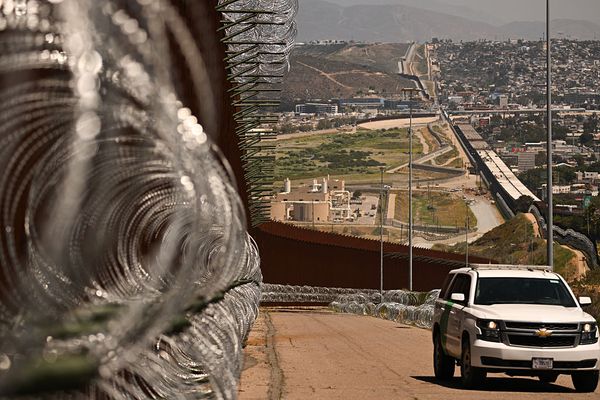
Ever noticed how your shopping cart seems to get a little heavier while you’re waiting in the checkout line? Grocery stores use clever tactics to encourage impulse purchases, especially when you’re near the register. These last-minute temptations are carefully chosen and placed to make you spend more, often on things you didn’t plan to buy. Understanding the tricks behind these placements can help you stick to your grocery budget. By recognizing these common strategies, you can make smarter decisions and avoid unnecessary spending. Let’s look at the eight most common impulse buys at checkout—and how to resist them.
1. Candy and Chocolate Bars
One of the most classic impulse buys at checkout is candy. Brightly colored wrappers, familiar brands, and the promise of a quick sugar rush make candy bars very hard to ignore. Stores place them right at eye level, both for adults and children. This strategic placement is no accident—it’s meant to catch your attention when your willpower is weakest. By the time you reach the register, you’ve already spent time shopping and may be tired or hungry, making it easier to justify a small treat. Remember, these items are rarely on sale and can quickly add up if you indulge every trip.
2. Gum and Mints
Gum and mints are another top item found near the checkout. These products are small, inexpensive, and marketed as a “little extra” for your shopping trip. You might convince yourself you need fresh breath for the ride home or that it’s a harmless add-on. In reality, these are classic impulse buys at checkout designed to capitalize on your momentary cravings. They are often positioned right next to the credit card machine, so you see them while paying. Resist the urge by planning ahead and keeping gum or mints in your car or bag instead.
3. Bottled Drinks
Bottled water, soda, energy drinks, and even small juice bottles are common near checkout aisles. These drinks are convenient and tempting, especially after a long shopping trip. Grocery stores know you might be thirsty or want a quick pick-me-up before leaving. The price for these single-serve drinks is usually much higher than buying them in bulk elsewhere in the store. If you find yourself reaching for a cold beverage, think about whether you really need it or if it’s just a reflex. Bringing your own drink can help you avoid this common checkout trap.
4. Magazines and Tabloids
While waiting in line, you’re a captive audience. Magazines and tabloids are placed at checkout to catch your eye with bold headlines and celebrity gossip. Even if you don’t usually buy magazines, you may be tempted to flip through one out of boredom. Publishers pay for premium placement here because they know shoppers are more likely to make an impulse purchase. Consider whether you’ll actually read the magazine or if it will just end up collecting dust at home.
5. Small Toys and Novelty Items
If you’ve ever shopped with kids, you know how tricky the checkout area can be. Stores often stock small toys, keychains, or novelty items at children’s eye level. These are meant to appeal directly to kids, who may beg for a new toy while you’re unloading groceries. The hope is that tired parents will give in for a quiet exit. These items are rarely a good value and often break quickly. If your child tends to ask for these, talk to them about your shopping plan ahead of time or bring a small toy from home to keep them occupied.
6. Travel-Size Toiletries
Travel-size lotions, hand sanitizers, and lip balms seem practical, but they’re another example of impulse buys at checkout. These small items are easy to grab, and their low price tags make them seem harmless. However, buying toiletries in larger sizes elsewhere in the store is almost always a better deal. These mini versions are marketed as convenient but often cost much more per ounce. If you really need a travel-size item, compare prices before you buy, or plan ahead and purchase them in bulk for less.
7. Gift Cards
Gift cards are increasingly common near checkout aisles. With bright, appealing designs for dozens of retailers and restaurants, they make a quick gift or last-minute addition to your purchase. Stores place them here to catch shoppers who suddenly remember an upcoming birthday or event. While gift cards can be useful, they’re also a common impulse buy at checkout. If you truly need one, you may find better deals or bonuses online.
8. Batteries and Phone Chargers
Essential items like batteries and phone chargers are often placed at checkout, banking on your fear of forgetting them. These are things everyone needs from time to time, but the price at checkout is typically higher than in the main aisles. The packaging might look like a deal, but you’ll almost always save money by purchasing these items in bulk or on sale elsewhere in the store. Make a list before shopping to avoid grabbing these “just in case.”
Smart Strategies for Beating Checkout Temptations
Recognizing common impulse buys at checkout is the first step to smarter shopping. Stores rely on these last-minute purchases to boost profits, and the temptation is real for every shopper. By making a list, sticking to your budget, and being mindful of the items you truly need, you can avoid falling for these checkout tricks. Consider packing snacks or drinks from home and keeping essentials on hand, so you’re less likely to grab them impulsively.
What tricks or tips do you use to avoid impulse buys at checkout? Share your thoughts in the comments below!
Read More
9 Ways Grocery Stores Trick You Into Spending More
How Grocery Stores Entice You to Try New Products and How to Avoid Unnecessary Purchases
The post 8 Items Placed Near Checkout to Trick You Into Spending More appeared first on Grocery Coupon Guide.







